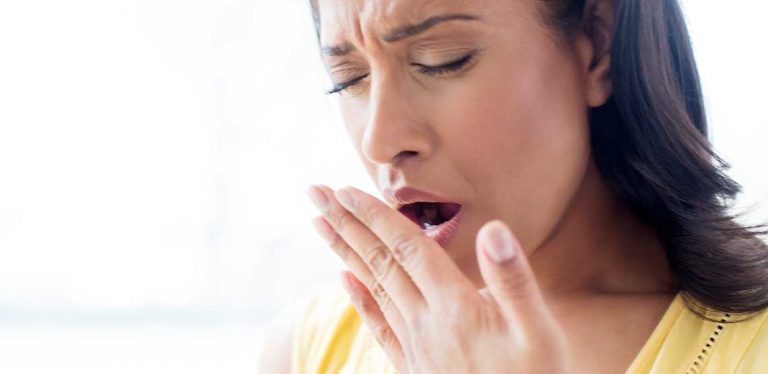How to Recognize COPD
Recognizing the signs and symptoms of COPD early on can help manage the disease and slow its progression.
Common Signs and Symptoms of COPD
1. Chronic Cough
A persistent cough, often referred to as a “smoker’s cough,” is one of the earliest signs of COPD. This cough can produce mucus (phlegm) and is usually worse in the morning. Over time, the cough becomes more frequent and may continue throughout the day.
2. Shortness of Breath
Difficulty breathing, especially during physical activities, is a hallmark symptom of COPD. People may notice that they become winded more easily while walking, climbing stairs or engaging in light physical tasks. As the disease progresses, shortness of breath may occur even while resting.
3. Wheezing
Wheezing is a whistling or squeaky sound that occurs when breathing, often due to narrowed airways. This symptom is common in COPD, particularly during flare-ups or periods of exacerbation when the airways become more inflamed.
4. Chest Tightness
Many people with COPD report feeling tightness or pressure in their chest, making it difficult to take deep breaths. This sensation is often described as a constriction or heaviness, which may worsen with activity or during a coughing fit.
Related Search Topics (Ads)
5. Frequent Respiratory Infections
COPD weakens the lungs and reduces their ability to clear infections, making patients more susceptible to respiratory infections like pneumonia or bronchitis. People with COPD often experience more frequent or prolonged illnesses.
6. Excessive Mucus Production
The production of excess mucus (also known as sputum or phlegm) is common in COPD, particularly in chronic bronchitis. The body produces mucus in an attempt to clear irritants from the lungs, but in COPD, this leads to airway obstruction and persistent coughing.
4 Uncommon Signs and Symptoms of COPD
1. Swollen Ankles, Feet or Legs
Fluid retention, particularly in the lower extremities, can occur in people with COPD. This happens when the heart and lungs struggle to circulate blood efficiently, leading to swelling (edema) in the legs, ankles or feet. This symptom can indicate that the disease has advanced or that heart problems are also present.
2. Fatigue
While fatigue can occur in many chronic illnesses, people with COPD often experience it due to the increased effort required for breathing. As oxygen levels in the blood decrease, everyday tasks become more exhausting, leaving individuals feeling constantly tired and drained.
3. Cyanosis
Cyanosis is a bluish tint to the lips or fingertips, which occurs due to low oxygen levels in the blood. This is a more severe sign of COPD, indicating that the lungs are not providing enough oxygen to the body.
4. Frequent Morning Headaches
People with COPD may wake up with headaches in the morning due to decreased oxygen levels during sleep. This can lead to an accumulation of carbon dioxide in the blood, which triggers morning headaches and can be a sign of poor lung function.
Treatment Options for COPD
Although COPD is not curable, treatment can help manage symptoms, slow the progression of the disease and improve quality of life. Depending on the severity of the condition, treatments can range from lifestyle changes to medications and even surgery.
Bronchodilators
Bronchodilators are medications that relax the muscles around the airways and open them up to make breathing easier. They can be short-acting or long-acting, depending on whether they are used for quick relief or long-term symptom control. Bronchodilators are typically administered through inhalers or nebulizers.
- Short-acting bronchodilators: These provide quick relief from sudden symptoms and are often referred to as “rescue inhalers.”
- Long-acting bronchodilators: These are used daily to keep symptoms under control and prevent flare-ups.
Inhaled Corticosteroids
Inhaled corticosteroids reduce inflammation in the airways. They help prevent exacerbations or flare-ups of COPD. They're often prescribed in combination with bronchodilators for patients with moderate to severe COPD. Long-term use can reduce the frequency of flare-ups, but may have side effects like increased risk of infections in the mouth and throat.
Combination Inhalers
Some people with COPD benefit from combination inhalers, which contain both a long-acting bronchodilator and an inhaled corticosteroid. These inhalers offer the benefit of two medications in one, providing better control over symptoms. An example of a popular combination medication is Stiolto (a combination of two bronchodilators—tiotropium and olodaterol).
Phosphodiesterase-4 Inhibitors
For people with severe COPD and chronic bronchitis, phosphodiesterase-4 inhibitors may be prescribed. These medications help reduce airway inflammation and relax the airways, improving airflow. They are often used in combination with bronchodilators and corticosteroids.
Oxygen Therapy
When COPD leads to severely reduced oxygen levels in the blood, supplemental oxygen therapy may be necessary. Oxygen is delivered through a mask or nasal prongs and can be used during sleep, physical activity or continuously, depending on the severity of the disease. Oxygen therapy helps relieve shortness of breath and allows patients to stay more active.
Surgery
In advanced cases of COPD, surgery may be recommended. The most common surgeries include lung volume reduction surgery, where damaged lung tissue is removed, or in severe cases, a lung transplant. Surgery is typically reserved for people who do not respond well to other treatments.

